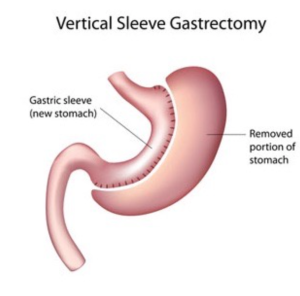 The Gastric Sleeve (Vertical Sleeve Gastrectomy) is a “Happy Medium”
The Gastric Sleeve (Vertical Sleeve Gastrectomy) is a “Happy Medium”
One of the reasons that the Lap-Band became so popular since its FDA approval in 2001 is because it was shown to have a lower risk of complications than the Gastric Bypass (RNY) which was the “gold standard” at that time. Although the Gastric Bypass resulted in more rapid weight loss, many opted to go with the Lap-Band simply due to the decreased risk of complications. Shortly after the Gastric Sleeve procedure was introduced, however, it was revealed that it may often help patients lose weight even faster than with the Lap-Band, while having fewer complications than the bypass. This is a combination of benefits that makes it a good choice for many bariatric patients seeking a middle-ground surgical option.
Gastric Sleeve Has Hormonal Advantages
In addition to limiting the capacity of the stomach, the Gastric Sleeve also limits the amount of Ghrelin that is released. Ghrelin is a hormone released by the stomach that tells the brain that it is time to eat. In obese patients, however, it appears to be produced in greater abundance, and production appears to actually increase as an individual loses weight. When 80 percent of the stomach is removed with a sleeve gastrectomy, many of the hormone emitters that release Ghrelin are also removed. The result is a significant reduction in the persistent cravings that can sabotage long-term weight loss and maintenance.
It Involves No Foreign Objects – While the Lap-Band is relatively safe, many patients may have trouble adjusting to the idea of a permanent foreign object in their body or the periodic adjustments that are most often required with banding. The Gastric Sleeve, on the other hand, simply creates a stomach that is smaller without putting any permanent fixtures other than surgical staples and simple sutures (stitches) in place. The Gastric Sleeve also avoids altering the path of digestion, as is the case with the gastric bypass.

